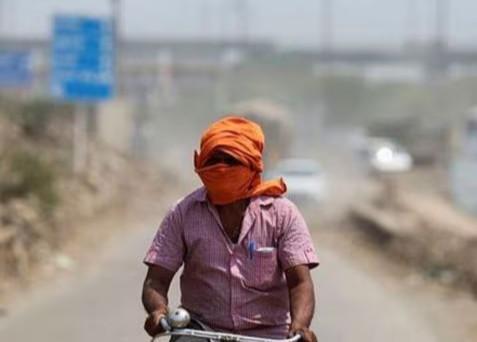
Extreme Heat Endangering Health & Productivity of Workers: Report
As the world grapples with the rising temperatures and increasing frequency of heatwaves, a recent report by the World Health Organisation (WHO) and the World Meteorological Organisation (WMO) has sounded the alarm on the devastating impact of extreme heat on the health and productivity of workers.
According to the report, worker productivity drops by 2-3% for every degree above 20°C, making it a significant concern for industries that operate in hot and humid environments. Manual workers in agriculture, construction sectors, and vulnerable populations like children and the elderly in developing countries are particularly at risk.
The report highlights the alarming health risks associated with extreme heat, including heatstroke, dehydration, and kidney dysfunction. Heatstroke, a potentially life-threatening condition, occurs when the body’s temperature regulation system is overwhelmed, causing the body temperature to rise rapidly. Dehydration, another common consequence of extreme heat, can lead to serious complications, especially in individuals who are already vulnerable.
The report emphasizes that the impact of extreme heat on workers is not limited to the physical health risks. The mental and emotional toll of working in extreme heat conditions should not be underestimated. Prolonged exposure to hot temperatures can lead to fatigue, decreased motivation, and reduced job satisfaction, ultimately affecting overall productivity and job performance.
The construction sector, which is heavily reliant on manual labor, is particularly vulnerable to the impacts of extreme heat. Workers in this sector are often exposed to temperatures above 40°C, making them more susceptible to heat-related illnesses. The report warns that the construction sector, which is already facing labor shortages and high attrition rates, is at risk of experiencing even greater challenges due to the debilitating effects of extreme heat.
The agriculture sector, another critical industry that relies heavily on manual labor, is also under threat. Farmers and laborers in this sector are often exposed to hot and humid conditions for extended periods, making them more vulnerable to heat-related illnesses. The report highlights that the impact of extreme heat on agricultural productivity can have far-reaching consequences, including reduced crop yields, decreased food security, and increased food prices.
The report also emphasizes the need for urgent action to mitigate the impacts of extreme heat on workers. Governments, industries, and individuals must work together to implement measures that reduce the risk of heat-related illnesses. This includes providing workers with access to cooling facilities, ensuring adequate hydration, and implementing heat stress prevention programs.
In addition, the report suggests that climate change mitigation strategies, such as reducing greenhouse gas emissions and transitioning to renewable energy sources, are essential for reducing the frequency and severity of heatwaves. This will help to create a safer and more productive working environment for workers in industries that are heavily reliant on manual labor.
In conclusion, the report by the WHO and WMO is a wake-up call for governments, industries, and individuals to take immediate action to address the devastating impact of extreme heat on workers. The health and productivity risks associated with extreme heat are real and can have far-reaching consequences for individuals, industries, and societies as a whole. It is essential that we prioritize the well-being and safety of workers, particularly those in manual labor-intensive industries, and take concrete steps to mitigate the impacts of extreme heat.
Source: https://repository.inshorts.com/articles/en/PTI/45d9bd2d-ff57-417c-9e5f-831344bb34b0






